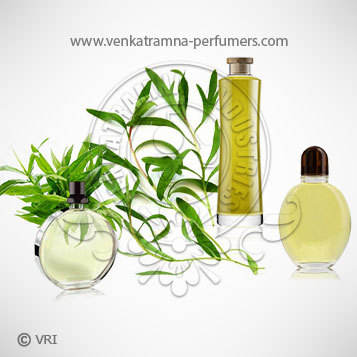
| Botanical Name | Artemisia dracunculus |
| Common Name | Artemisia dracunculus l. herb oil estragon oil, tarragon herb oil, tarragon oil (artemisia dracunculus) |
| Country of Origin | Eastern Europe, France, Hungary, Netherlands, USA |
| Solubility | Alcohol |
| Specific Gravity | -.720 |
| Optical Rotation | +1 TO + 10 |
| Refrective Index | 1.50400 to 1.52000 @ 20.00 °C |
| PlantPart | Whole plant. |
| Bland With | Carrot seed, lavender, lime and rosewood |
| CAS No | 90131-45-6 |
| Flash Point | 70 °C |
| Extraction Method | Steam distilled. |
These are perennial herbs that have smooth narrow leaves; an erect stem up to 1,2 metres tall, and small yellow-green, inconspicuous flowers. Native to Europe, southern Russia and western Asia, these are available all over the world. However, the oil is produced in France, Holland, Hungary and the USA. These herbs are widely used to cure anorexia, hiccups, internal spasm, dyspepsia, flatulence, nervous indigestion and even menstrual pains. In addition to it, these are also used in vapor therapy and blended massage oil. Known for adding fragrances to umpteen components like soaps, detergents, alcohols, soft drinks, cosmetics, perfumes and foot items.
The name is derived from the Arabic word 'Tharkhoum' and the Latin word 'Dracunculus' meaning 'little dragon' - probably because of the way the root seems to coil up like a dragon. Artemisia, one of the larger genera in the family Asteraceae and the largest genus in the tribe Anthemideae, comprises from 200 to more than 500 taxa at the specific or subspecific level. Many Artemisia species have a high economic value in several fields, as food plants and as antihelminthic and antimalaria in medicine. Artemisia dracunculus, commonly called wild tarragon, is a polymorphic species that is native to temperate Europe and Asia. It is also found in western North America, though many of these populations may have resulted from introduction and naturalization. It produces viable seed and will often self-seed. Its leaves produce variable flavor and aroma, sometimes lacking both flavor and aroma. It has a long history of medicinal uses, but the species is not often used for culinary purposes. It is a rhizomatous perennial or sub-shrub that typically grows to 24” (less frequently to 36”) tall on generally erect stems clad with narrow, linear to lance-shaped, light to medium green leaves (to 3-4” long). Greenish white flowers in narrow elongated panicles bloom in summer.
Color : Pale yellow,
Aroma : Tarragon oil has a herby, spicy, somewhat anise aroma.
Estragol, methyl eugenol, 7-methoxycoumarin, geraniol and eugenol.
The plant is harvested from the wild for local use as a medicine and fuel. The plant is sold in local markets for medicinal use. Artemisia herba-alba is a popular herbal treatment in N. Africa, where it is a remedy for all kinds of ailments. The plant is considered to be carminative, cholagogue, depurative, diuretic, emmenagogue, sedative, stomachic, tonic and vermifug. It is used in the treatment of conditions such as diabetes, coughs and colds, lung problems, diarrhoea, vomiting, flatulence, fever, measles, jaundice, poisoning, cardiac arrhythmia, and muscle weakness It is also used for treating parasitic infections such as roundworms, pinworms, tapeworms, hookworms, and flukes.